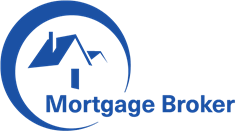Buying a Home With a Mortgage

A mortgage is a loan that allows an individual or a business to purchase real estate without paying the full price up front. The borrower then pays off the loan and interest over a specified number of years until they own the property free and clear.
Choosing the right mortgage is one of the most important parts of buying a home. It can affect your budget and long-term financial goals. It is also essential to shop around for the best mortgage product and rates.
When you’re ready to apply for a mortgage, start by filling in some background information about your prospective home and mortgage. This includes the home’s price, down payment amount and mortgage interest rate. In addition, you can input the number of payments that you’d like to make during your mortgage term.
Mortgage interest rates vary from lender to lender and are based on your credit score, the size of your mortgage, your mortgage product, and more. They can be unpredictable and can fluctuate significantly, so it’s important to shop around.
Calculating monthly mortgage payments
Your mortgage payment is the sum of the principal, interest, and taxes you’re charged on your loan. It is also influenced by insurance policies that you may have.
Understanding your mortgage amortization schedule will help you understand how your payments decrease over time and can save you money in the long run.
Paying too much on your mortgage can put you behind financially and jeopardize the sale of your home. To avoid that, consider a shorter loan term or making extra payments toward your mortgage principal.
Getting a preapproval for your mortgage is an important step in the process of purchasing a home. It gives you a chance to check your credit and see how the bank views your income, debt-to-income ratio, and other factors.
Once you get preapproved, the next step is to get an appraisal of the home you’re considering. This will tell the lender whether or not the home is worth the price you’re willing to pay for it.
It can also help you decide how much house you can afford based on your income, existing debt, and how much you have saved for a down payment. In general, you should not pay more than 28% of your income on a mortgage payment.
The most common type of mortgage is a fixed-rate mortgage, but there are several other options out there, including adjustable-rate mortgages (ARMs) and government-backed loans. ARMs typically have lower initial interest rates than traditional fixed-rate mortgages, but they can adjust up or down over the life of your loan based on market conditions.
APR stands for Annual Percentage Rate, which is the percentage of interest you will pay over the life of the loan. It is the rate lenders use to calculate your mortgage payment, and it can be a bit higher than your actual interest rate because of additional fees that they include in their calculation.
